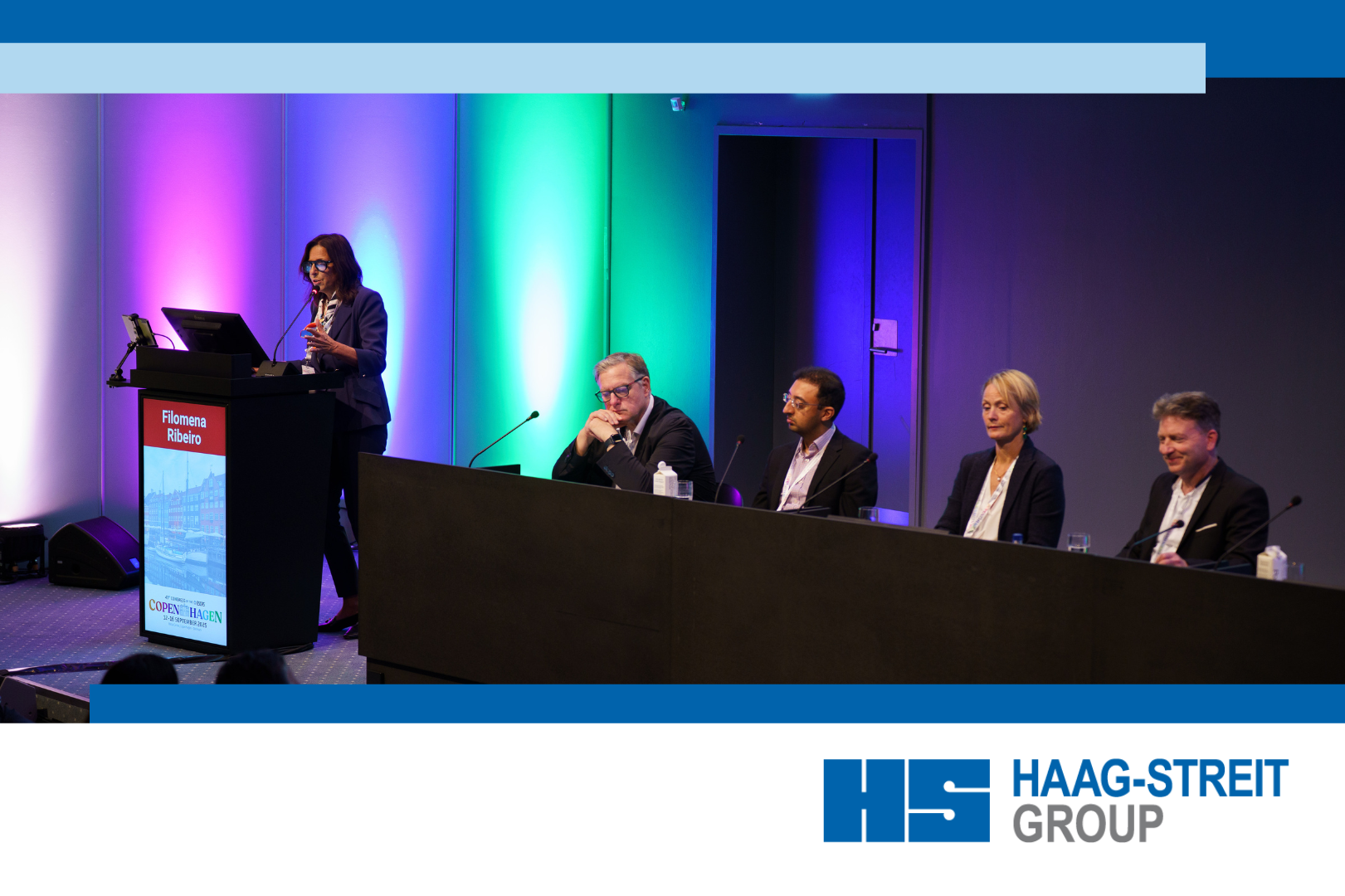Sponsored by Haag-Streit
At the recently held 43rd Congress of the European Society of Cataract and Refractive Surgeons (ESCRS 2025), ophthalmologists shared their clinical experience with Haag-Streit’s Elara 900. Described as a “slit lamp for the 21st century,” the Elara 900 builds on tradition with improved visualization, ergonomics, workflow, and documentation features.
Breaking the slit lamp mold
A new slit lamp doesn’t come around often. As Prof. Gerd Auffarth (Germany) noted, “I cannot remember ever having a symposium on slit lamps at ESCRS. It’s an instrument that everybody takes for granted…you just never consider that it could get any better.”

Now, the Elara 900 proves that slit lamps can improve, with key features like superior clinical visualization, optimized ergonomics and dual-camera documentation in 3D video or image capture in 4K. Further, Elara 900’s one-touch “presets”, coupled with motorized height and magnification, reduce manual steps which could streamline examinations.
“You can have automated presets that guide you through, for example, evaluation for a corneal procedure. If you have a DMEK [Descemet membrane endothelial keratoplasty] and do a follow-up, you have the right magnification and the illumination,” explained Prof. Auffarth.
He then shared promising findings from his recent survey comparing the Elara 900 with a traditional slit lamp. Twenty residents and consultants at University Eye Clinic Heidelberg (Germany) who used the Elara 900 for at least one day were included.
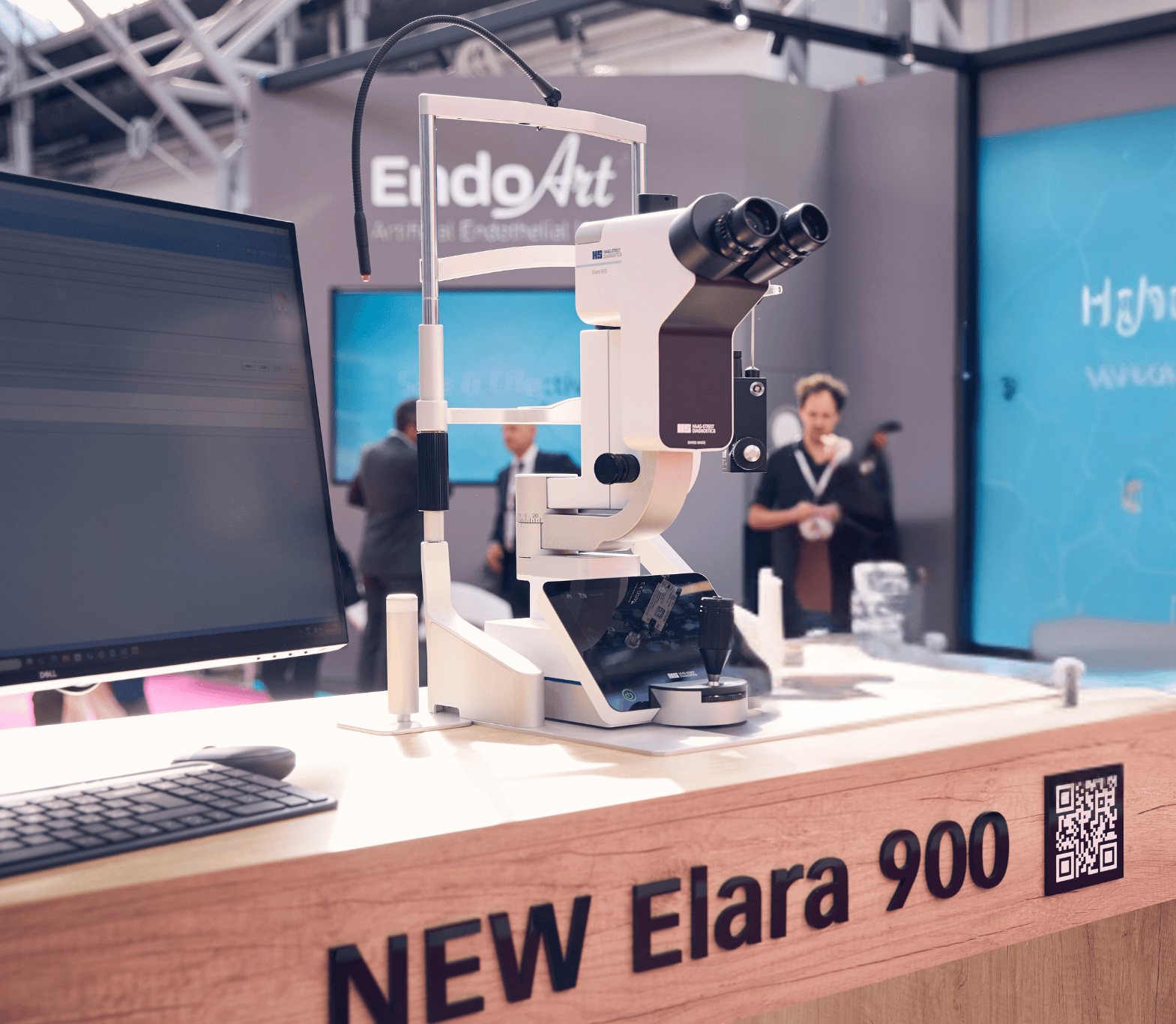
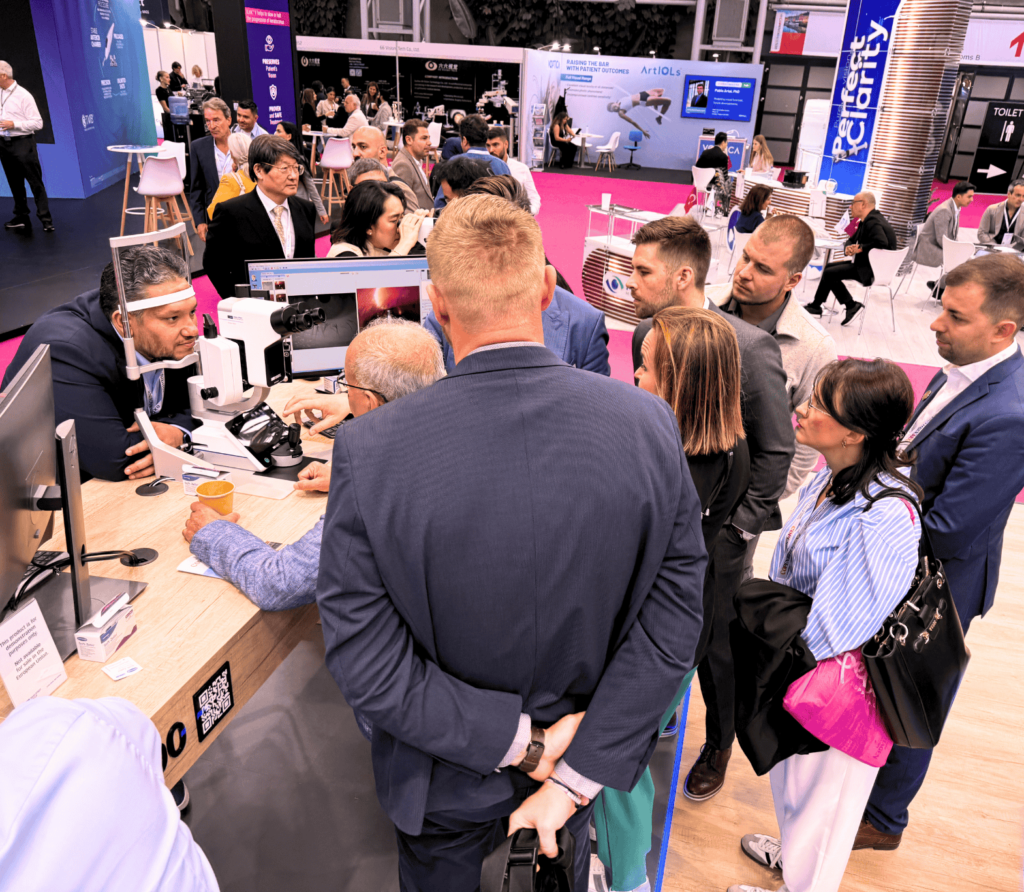
Examinations were slightly faster with Elara 900 with a mean exam length of 3.9 ± 1.12 minutes using Elara 900 versus 4.85 ± 0.96 minutes with a traditional slit lamp. Prof. Auffarth noted that, although exams can be completed quicker with the Elara 900, new users often spend more time exploring its different capabilities and taking videos. Both slit lamps have a comparable adjustment period, with Elara 900 having a slight edge.
Comfort is another key factor—and 70% said that Elara 900 was more ergonomic. This left 30% undecided, while none (0%) said the traditional slit lamp was more comfortable.
All respondents said Elara 900 had superior image quality. Prof. Auffarth explained that “the main reason for Elara 900’s overall superiority lies in the great detail it provides.” Seventy-five percent also voted for Elara 900 as having the better fundus visualization, with only 10% preferring the traditional slit lamp.
In addition, 100% would use Elara 900’s photo and video documentation in their daily work routine. Overall, 90% preferred Elara 900, while 5% were undecided and 5% preferred the traditional slit lamp.
“We’re here to show that there can be change, advancement, and enhancement in a slit lamp—that you can put a slit lamp in the 21st century,” said Prof. Auffarth.
Leading with ergonomic design
“When acquiring new technology, how often do we consider ergonomics?” asked ESCRS President, Prof. Filomena Ribeiro (Portugal). “It’s not something that comes to mind, but it’s very relevant.”
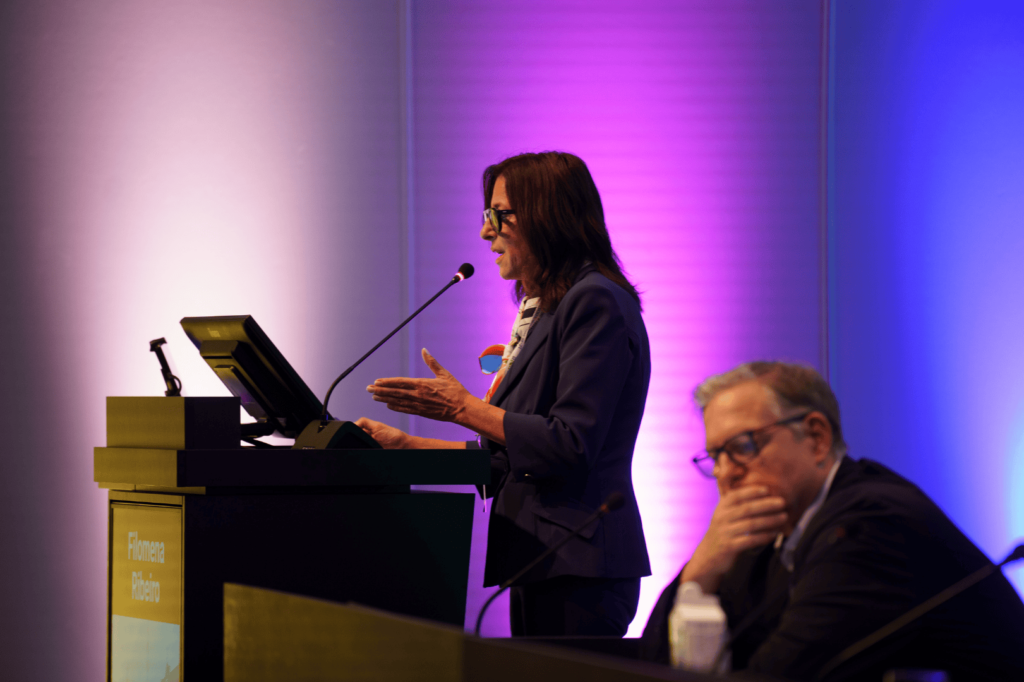
“Many eye care professionals report pain from using a non-ergonomic device,” she continued, adding that 79% reported neck pain in the past 6 months.*
The Elara 900 addresses ergonomic issues encountered in traditional slit lamps. One key feature that enables a fatigue-free working posture is Elara 900’s inclined eyepiece, which encourages a natural head and neck position. Prof. Ribeiro says Elara 900’s ergonomics reduce strain, support long-term comfort, and were designed with the comfort of the patient, as well as the examiner, in mind.
The optical path of the Elara 900 is decreased by 23% compared to traditional slit lamps. This brings the patient closer and reduces strain during exams. Additionally, it has a spacious headrest, creating a more comfortable experience for patients.
To learn more about its ergonomic features, Prof. Ribeiro conducted a recent internal study with 10 users at her clinic comparing the Elara 900 with a traditional slit lamp. Elara 900 fared either significantly or somewhat better in all categories, including examination speed, workflow, posture, and patient positioning.
Offering unrivaled clarity, optics & illumination
Dr. Sunil Mamtora (United Kingdom) admitted that he was initially skeptical about Elara 900’s new visualization features and optical redesign. In fact, he was convinced that Haag-Streit’s BQ 900 was the gold standard: “I didn’t think it could get any better,” he revealed.
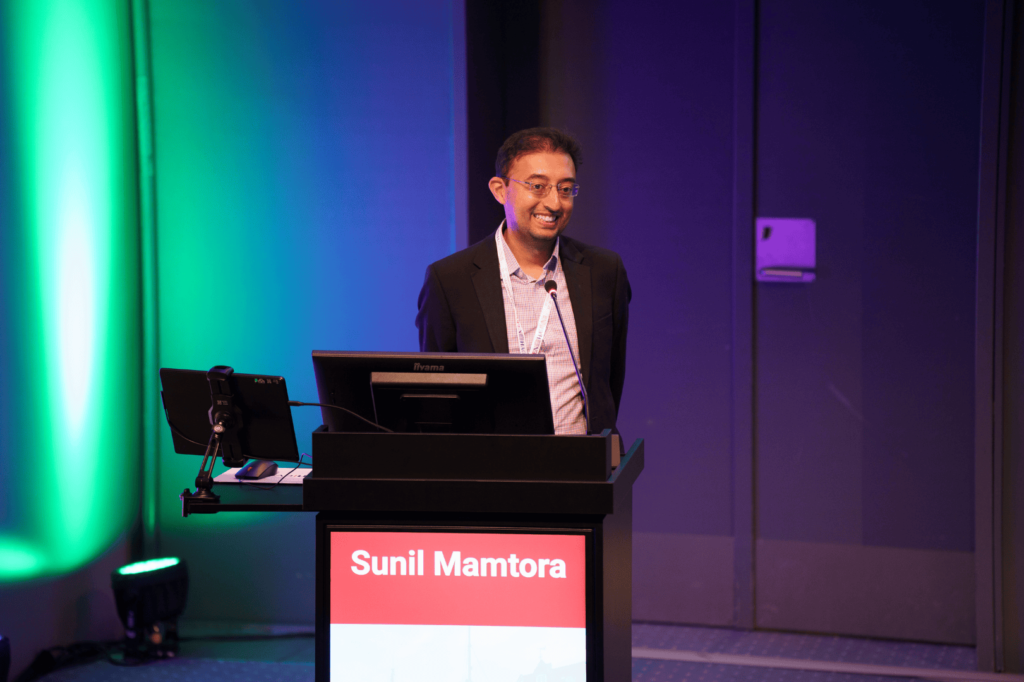
“But when I used Elara 900 for the first time, there was a ‘wow’ moment,” said Dr. Mamtora. “When you focus on that corneal slit, the resolution, the dynamic range, the effect that you see there…it’s quite astonishing.”
He explained that the definite, noticeable improvement in optical quality is a result of the Elara 900’s reduction in source aberrations, and its “P-Type” projector illumination and new optical design.
“With the new “P-Type” projector illumination in the Elara 900, you shine the light directly onto the eye [rather than reflected from a mirror]. You reduce the source of aberrations, and unsurprisingly, you have a crisper image,” he said.
Elara 900 also has the capability to preset illumination parameters. “When we examine the cornea, we benefit from having a cooler color temperature. When we examine the retina and the fundus, we benefit from having a warmer color temperature. With this, you can really fine tune. You can change the color temperature, you can change the white balance,” said Dr. Mamtora.
“The optical system has also been redesigned, so the optical pathway isn’t extended,” he continued. “If you struggle with having to stretch your arm further in a slit lamp with a beam splitter, that’s no longer a problem.”
Dr. Mamtora led a study comparing Elara 900 with the BQ 900 with 20 ophthalmologists from the Royal College of Ophthalmologists’ (RCO) Annual Congress. He said their results clearly favored Elara 900: 70% said there was improved visualization with Elara 900 and 30% reported there was no difference.
Evolving clinical practice
Prof. Maria Kugelberg (Sweden) described her experience with Elara 900 as “a revolution.”
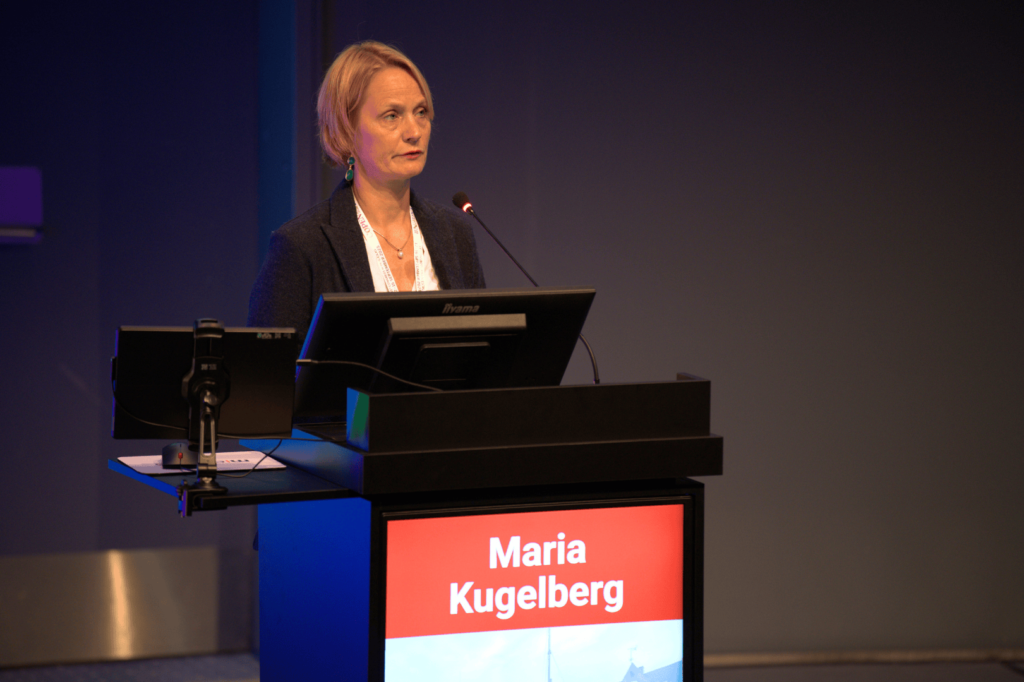
“Nothing has happened in this field since 1911 when the slit lamp was invented,” said Prof. Kugelberg. “But now it’s here.”
In her clinical practice, she said that patient satisfaction, with good posture for both patients and doctors, are standout benefits of Elara 900. “The Elara 900’s patient headrest provides better neck posture and larger patients are more comfortable too,” she shared.
Elara 900 also better supports patient education and interaction. Prof. Kugelberg highlighted its documentation capabilities that allow doctors to take and review images in real-time.
“You can show the patient the problem or if there was a complication. You can describe how you will fix it,” said Dr. Kugelberg. This improves communication and can be helpful when family members are present, a common scenario with cataract patients, she explained.
Improving patient compliance
Prof. David Goldblum (Switzerland) discussed how Elara 900’s images can be used to educate patients and improve compliance. He reminded the audience that the slit lamp has numerous functions: It’s used in exams, diagnostics, documentation, imaging, and sometimes, even as a microscope for surgery. Clinical photography also supports better disease tracking and patient reassurance.

“The quality of Elara 900 is unsurpassed,” said Prof. Goldblum. “It has image quality that you see directly.”
So, how can this improve compliance? Well, as Prof. Goldblum said, “a picture is worth a thousand words.” He then explained the picture superiority effect (PSE): the phenomenon in which pictures are more likely to be remembered than spoken or written information.
Relaying PSE back to the Elara 900, he recalled a recent case: “When I showed pictures [from Elara 900] to the patient, he was absolutely keen on having a biopsy taken. Unfortunately, we were right and this was a melanoma. He’s in treatment now,” he shared. “[The images were] a great help in treating and guiding the patient.”
In the end, he said that “sharing photographs with our patients will enhance their understanding, and their confidence in us.”
* Wasserman JB, Bustos KM, Coombs SD, et al. Effect of slit lamp table design on neck position and the prevalence of neck pain in eye care professionals. Work. 2022;72(1):181-188.
Editor’s Note: Reporting for this story took place at the 43rd Congress of the European Society of Cataract and Refractive Surgery (ESCRS 2025), held from 12-16 September in Copenhagen, Denmark. This content is intended exclusively for healthcare professionals. It is not intended for the general public. Products or therapies discussed may not be registered or approved in all jurisdictions, including Singapore.
“The Slit Lamp Exam. Reinvented” satellite symposium is now available on-demand If you missed the symposium – or would like to revisit the discussions – the full recording, courtesy of MCI, is available now on YouTube.
